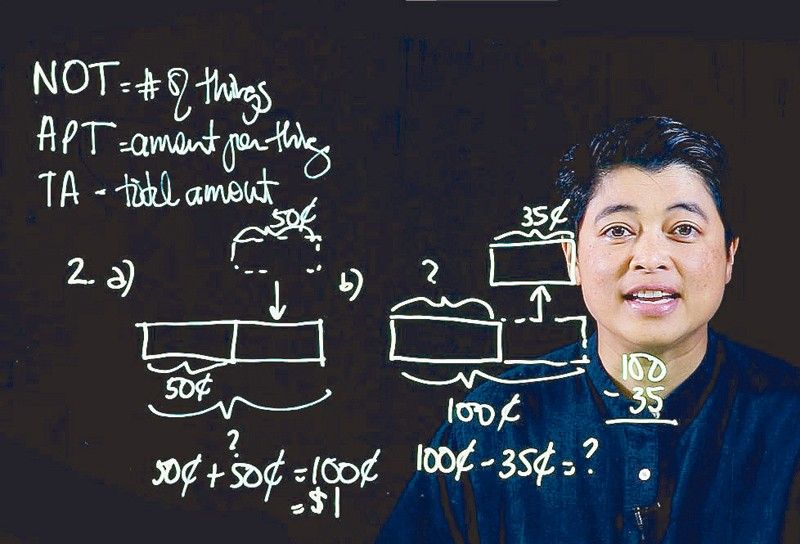The pros and cons of distance learning


Please raise your hand if you can answer yes to this question: If a nine-year-old comes up to you with a math problem, would you be able to help him solve it?”
This was the question posed by Marco Lobregat at the recent Zoom event “Virtual Coffee Talk On Distance Learning,” which explored the current state of (online) education in the country under the new normal.
My hand froze. Math was my least favorite subject in high school.

“These days, it’s important for more and more people to be able to answer yes to that question, mainly because parents, guardians and even older siblings are now taking the task of teaching elementary grade school students at home,” explained Lobregat.
But let’s face it: Teaching is a skill not everyone is equipped with.
Moms know best
With school happening at home, parents whose children have had a head start are beginning to see the benefits and the many challenges of distance learning.
Doting moms and education advocates Audrey Tan-Zubiri, Mikaela Lagdameo-Martinez and Michelle Reyes, whose kids are studying from home (via online or homeschooling), shared that their roles have expanded. Aside from being a mom, they also function as “a guidance counselor, a classmate, cafeteria owner, even tech support,” said Zubiri with a laugh.
Martinez, a mom of three, shared that she has two different situations at home. “My eldest daughter was homeschooled three years ago so we kind of had a bit of practice for the homeschool life,” she said. “And then my preteen son is distance learning. He’s following the programs of the school via synchronous lessons.”

With home schooling, parents are in charge of everything. They basically purchase the program from the supplier. But when it comes to distance learning, the teacher is in charge.
How will they keep the students motivated when the temptations (in the home) are great? How do you get them engaged and feel connected to the lesson?
Henry Muñoz, CEO and founder of Edukasyon.ph, said educators must mimic the online consumption of the students.
“Since most kids enjoyed playing video games while on lockdown, teachers must introduce gamification and shorter content. What can you teach children in five- to 10-minute sessions?” he stressed. “It’s better to introduce short sessions than cramming many lessons in one session.”
According to Martinez, transitioning from regular school to a homeschool setup three years ago put so much pressure on her.
“Am I doing it right? Are my efforts good enough?” said Martinez. “I got so stressed at the beginning. But step by step, my daughter and I managed to survive. There’s no need to rush. You’ll get the hang of it, but it takes time.”
Martinez added that her son had to make the most adjustment.
“He enjoyed having his friends/classmates around. And so when everything went completely digital, he didn’t like it at first. Well, it has been two weeks since he started online classes and I think he has learned to adapt in time,” enthused Martinez. She says the silver lining was discovering her children’s learning styles.
“Each child has a different way of learning and you only get to see this now that they are studying at home. That’s the reason why I have full respect for teachers. It’s a lot of work!” added the celebrity mom. “What’s nice about homeschooling is that the students can go at their own pace and have time to explore their other interests. I feel that they have a more balanced life now and get to spend more time with the family.”
Math wiz Michelle Reyes, founder of My Study Partner Tutorial Center and My Study Partner Foundation, gave advanced math lessons to her son, who is in fourth grade.
“I let him do his work most of the time, but during the lockdown I was worried because he was taking it easy. So I told him that he needs to get ready before school starts. We started studying every day for 30 minutes. He didn’t like it at first, but eventually he enjoyed it so much that he’s now ahead by two years in the subject,” enthused the proud mom.
Zubiri, on the other hand, said that structure is essential to keep children interested in school.
“Kids should still follow a schedule. Also, don’t let them go to class in pajamas,” advised Zubiri, who also warned parents to resist the temptation to become too involved in their children’s studies.
“Learn how to detach. You are there as a coach. Make sure that we have a line that we don’t cross,” she added.

Let the (distance) learning begin
Sadly, not all moms are as hands-on and involved with their children’s education as Zubiri, Martinez and Reyes are. Add to that, not all parents can provide the gadgets and internet access their kids need.
“The government’s policy right now is to refrain from implementing face-to-face learning,” said Senator Sherwin Gatchalian, chairman of the Committee on Basic Education, Arts and Culture. “The (public) school opening on Oct. 5 will focus on distance learning.”
However, statistics show that less than 47 percent of our public school children have access to the internet, let alone laptops, tablets and mobile phones.
“But the 47 percent varies,” noted Gatchalian. “In Metro Manila, it could go as high as 70 percent. In the rural areas, it can go below 10 percent. In some areas, less than 10 percent of the kids have internet access.”
And that’s where the problem comes in.
“Ninety-percent of our kids go to public schools. The private schools have already started through online platforms like Zoom and Google Classroom. But in our public school system, it’s totally different,” said Gatchalian.
DepEd will provide self-learning modules to the students. And so the parents will play a very important role in teaching and supervising their kids, especially for students from kindergarten to grade 3.
“Based on the survey we’ve conducted, most parents living in the rural areas aren’t confident in teaching their kids, especially math,” noted the solon.

Math made easy
And that’s where the expertise of Michelle Reyes comes in.
Reyes, founder of My Study Partner Tutorial Center and My Study Partner Foundation, specializes in teaching Singapore Math, and has partnered with Marco Lobregat of, partner of Synergy Media Specialists and V-Dose Education, an instructional video platform, in developing online videos for parents on how to teach Singapore Math to their children through guided assistance and proven techniques.
“Aside from country reports, Synergy Media Specialists ventured into a video content platform called V-Dose. One of its main thrusts was to produce videos that educate. When Michelle Reyes came on board with these tutorial videos, it made sense to have an offshoot of V-Dose that focused on education,” explained Lobregat, a former student of Reyes. “V-Dose brings the craft and knowledge of educators across various fields unto a visual storytelling stage.”
Its first product tackles the pertinent needs of families currently conforming to distance learning and working from home.
In a tutorial series of videos focused on the highly regarded Singapore Math approach, V-Dose enlists the expertise of Reyes in equipping parents for the role of elementary math tutor.
Guided Singapore Math with Michelle Reyes features four modules per grade level from grades 2 to 6 through a digital course that includes textbooks from Marshall-Cavendish and respective answer keys. Each lesson in the module is detailed by Reyes, who has been teaching math since she was 15.
Singapore Math develops mastery in students through a three-part technique —Concrete, Pictorial and Abstract — that outperforms simple memorization.
“From hands-on application to visual understanding, students are able to grasp abstract concepts and retain the lesson, ultimately developing such skills as mental computation and even teaching the exercises to another,” explained Reyes.

* * *
Guided Singapore Math with Michelle Reyes is now available for purchase and download at www.vdose-edu.com.



















